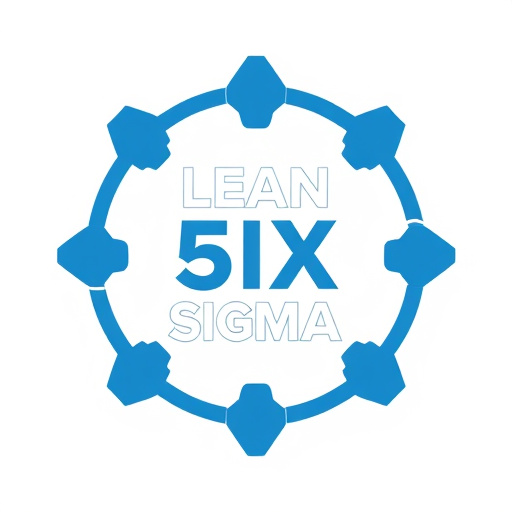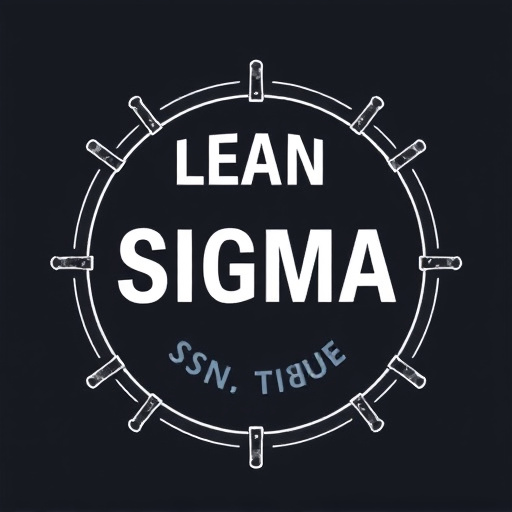Lean Six Sigma emphasizes action items as vital tools for translating problem recognition into solution implementation. Each item is structured with clear objectives, responsible parties, deadlines, and expected outcomes to ensure accountability and focused efforts towards operational excellence. Effective responsibility assignment, powered by technology like automated task routing and real-time progress tracking, streamlines processes and fosters collaboration. Measuring success relies on evaluating the effectiveness of responsibility assignment through KPI metrics, regular progress tracking, and individual accountability, ultimately driving improved efficiency, productivity, and team morale.
In the realm of Lean Six Sigma, action items play a pivotal role in process improvement. This article delves into the crucial aspect of responsibility assignment within action item management, examining its profound impact on project outcomes. We explore why effective responsibility assignment is a game-changer, offering strategies to optimize this critical step. Learn how measured success can be achieved by evaluating the effectiveness of these assignments, ultimately enhancing overall Lean Six Sigma initiatives.
- Understanding Action Items and Their Significance in Lean Six Sigma
- The Impact of Effective Responsibility Assignment
- Strategies for Optimizing the Assignment Process
- Measuring Success: Evaluating the Effectiveness of Responsibility Assignment
Understanding Action Items and Their Significance in Lean Six Sigma

Action items are critical elements within the Lean Six Sigma framework, serving as actionable steps to achieve process improvement and operational excellence. These tasks represent specific actions or changes required to rectify issues identified during process analysis. Understanding action items is paramount because they bridge the gap between problem recognition and solution implementation. Each action item is designed with a clear objective, responsible party, deadline, and expected outcome, ensuring accountability and focused efforts towards process enhancement.
In Lean Six Sigma, action items are not merely to-do lists; they are strategic interventions aimed at eliminating waste, reducing variability, and enhancing overall process performance. Their significance lies in their ability to transform insights from data analysis into tangible improvements. Effective action item management involves assigning responsibilities, setting measurable goals, and monitoring progress, fostering a culture of continuous improvement within organizations implementing Lean Six Sigma methodologies.
The Impact of Effective Responsibility Assignment

In the realm of action item management, effective responsibility assignment serves as a cornerstone for successful Lean Six Sigma initiatives. When tasks are delegated clearly and strategically, teams can optimize their efforts and maximize efficiency. This ensures that each member understands their role, fostering a collaborative environment where everyone works cohesively towards common goals. By assigning responsibilities, project managers can prevent confusion, reduce errors, and streamline workflows, ultimately leading to improved overall process quality.
Moreover, efficient responsibility assignment enables better resource allocation. It allows teams to leverage individual strengths and expertise, enhancing problem-solving capabilities. In the context of Lean Six Sigma, where continuous improvement is paramount, clear accountability encourages a culture of ownership. This empowers employees to take initiative, drive innovation, and continuously seek ways to eliminate waste, thereby fostering a robust and adaptable organizational structure.
Strategies for Optimizing the Assignment Process

In the realm of action item management, optimizing the responsibility assignment process is akin to applying lean six sigma principles in a manufacturing setting—it’s about streamlining workflows and eliminating waste. The initial strategy involves clearly defining roles and responsibilities, ensuring every team member understands their place in the project ecosystem. This clarity fosters collaboration and prevents confusion or duplication of efforts.
Additionally, leveraging technology can significantly enhance this process. Utilizing specialized project management tools equipped with advanced features like automated task routing, real-time progress tracking, and intelligent alerting systems can streamline the assignment and monitoring phases. These digital solutions enable efficient information flow, prompt issue resolution, and data-driven decision-making—all vital components for successful action item execution within complex projects.
Measuring Success: Evaluating the Effectiveness of Responsibility Assignment

Measuring success in action item management is intricately linked to evaluating the effectiveness of responsibility assignment. It’s a core principle within Lean Six Sigma methodologies, focusing on optimizing processes by streamlining accountability. When assigning responsibilities, the key performance indicators (KPIs) should reflect clear lines of ownership and timely completion. This involves tracking progress regularly, setting measurable goals, and holding individuals accountable for their assigned tasks.
By implementing robust metrics, teams can assess whether responsibility assignment is fostering efficiency and productivity. Positive outcomes might include reduced task completion times, improved quality standards, and enhanced team morale due to clear roles. Conversely, ineffective responsibility assignment could lead to delays, errors, and frustration among team members. Therefore, continuous assessment and adjustment of these practices are essential to ensure successful action item management, aligning with Lean Six Sigma’s goal of eliminating waste and enhancing overall process performance.
Responsibility assignment plays a pivotal role in successful action item management within Lean Six Sigma initiatives. By effectively delegating tasks, teams can optimize process efficiency and drive significant improvements. Through strategic optimization of the assignment process, organizations can ensure that responsibilities align with skills and availability, fostering collaboration and accountability. Measuring success involves evaluating the impact on project outcomes and overall Lean Six Sigma effectiveness, demonstrating the critical importance of responsible assignment in achieving desired transformations.